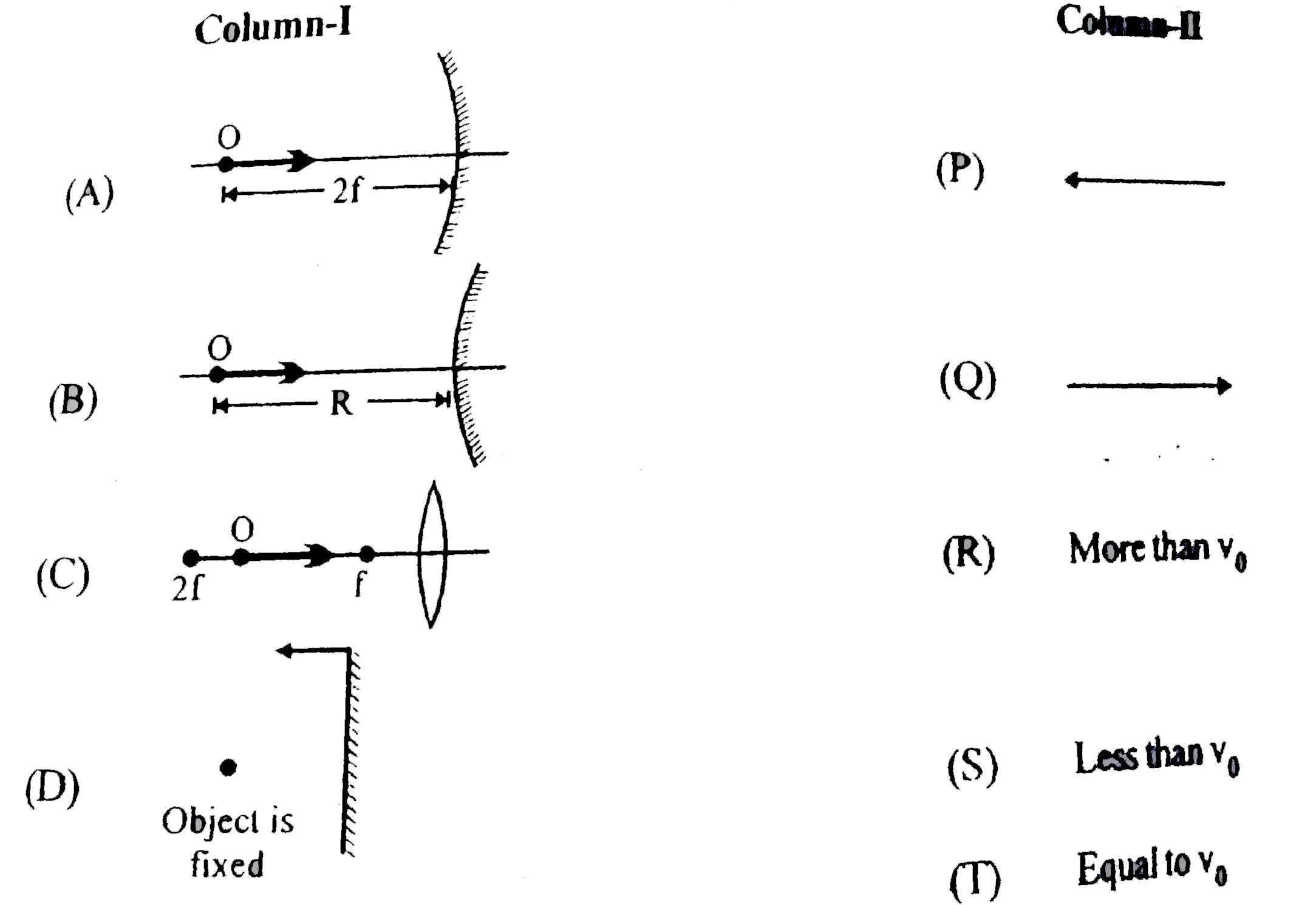A real object is moving toward a fixed spherical mirror. The image
must move away from the mirro
may move away from the mirror
may move toward the mirro if the mirror is concave
must move toward the mirror if the mirror is convex
The correct Answer is:b.,c.,d.
If the mirror is concave and a real object is approaching it, the image will move away from the mirror for object distance greater than focal length. If object distance is less that the focal length, virtual image will be formed which moves toward the mirror.
If mirror is convex, as object is approaching the mirror, image will move from focus to pole, i.e., toward the mirror.
Topper's Solved these Questions
- GEOMETRICAL OPTICSBOOK - CENGAGE PHYSICSCHAPTER - GEOMETRICAL OPTICSEXERCISE - Assertion-Reasoninig
2 Videos
- GEOMETRICAL OPTICSBOOK - CENGAGE PHYSICSCHAPTER - GEOMETRICAL OPTICSEXERCISE - Linked Comprehension
51 Videos
- GEOMETRICAL OPTICSBOOK - CENGAGE PHYSICSCHAPTER - GEOMETRICAL OPTICSEXERCISE - Subjective
26 Videos
- FRICTIONBOOK - CENGAGE PHYSICSCHAPTER - FRICTIONEXERCISE - QUESTION BANK
1 Videos
- GRAVITATIONBOOK - CENGAGE PHYSICSCHAPTER - GRAVITATIONEXERCISE - Question Bank
39 Videos
Similar Questions
A particle is moving towards a fixed convex mirror. The image of object also moves. If Vi is the speed of image and V0 is the speed of the object, then :
View SolutionConsider the situation shown in column-I a real object is moving towards a fixed optical component or an optical component is moving towards a fixed object. Match the possible direction and magnitude to velocity of image as shown in Column-II (All velocities in column-II are equal to v_(0))

View Solution
Knowledge Check
A point object is placed at a distamce of 10 cm anad its real image is formed at a distance of 20 cm from a concave mirror. If the object is moved by 0.1 cm towards the mirror. The image will shift by about
A0.4 cm away form the mirrorB0.4 cm towards the mirrorC0.8 cm away from the mirrorD0.8cm towards the mirrorAn object is moving towards a stationary plane mirror with a speed of 2 m/s. Velocity of the image w.r.t. the object is
A2 m/s towards rightB4 m/s towards rightC2 m/s towards leftD4 m/s towards leftThe speed at which the image of the luminous point object is moving, if the luminous point object is moving at speed v0 towards a spherical mirror, along its axis is
(Given, R= radius of curvature u= object distance)Avl=−voBvl=−vo[R2u−R]2Cvl=−vo(2u−RR)Dvl=−vo(R2u−R)
What will be the image speed if
(i) Object is moving towards the plane mirror with speed v ?
(ii) The plane mirror is moving towards the object with speed v ?
View SolutionEstablish relation between the speeds of object and image formed by a spherical mirror.
View SolutionA point object is placed at a distance of 10 cm and its real image is formed at a distance of 20 cm from a concave mirror. If the object is moved by 0.1 cm towards the mirror, the image will shift by about
View SolutionA real object is placed in front of a convex mirror (fixed).The object is moving toward the mirror. If v0 is the speed of object and vi is the speed of image, then
View Solution
When object O moves towards a fixed lens mirror combination, select correct choice/choices:
View Solution
